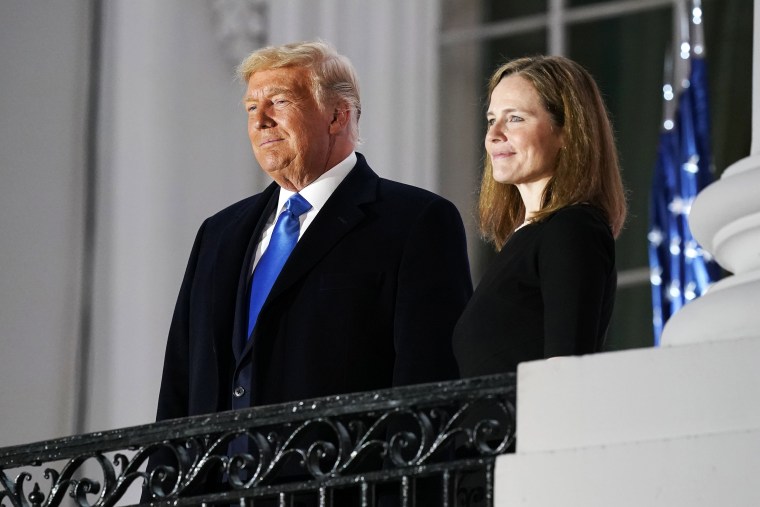About an hour after a divided Senate, voting along largely partisan lines, confirmed Amy Coney Barrett to the Supreme Court, the conservative jurist delivered brief remarks stressing the importance of independence.
"It is the job of a senator to pursue her policy preferences. In fact, it would be a dereliction of duty for her to put policy goals aside. By contrast, it is the job of a judge to resist her policy preferences. It would be a dereliction of duty for her to give into them," she said. "A judge declares independence not only from Congress and the president but also from the private beliefs that might otherwise move her."
Those were, to be sure, the kind of comments one expects from a judge. The problem, however, wasn't with the rhetoric, but rather with the setting in which the remarks were delivered.
When President Barack Obama's Supreme Court nominees were confirmed, Justices Sonia Sotomayor and Elena Kagan were sworn in at the high court by Chief Justice John Roberts. The events were understated. The Democratic president, eager to respect the importance of the judiciary, was not on hand.
In contrast, when Donald Trump's first two nominees were confirmed, Justices Neil Gorsuch and Brett Kavanaugh were sworn in inches away from the Republican president who seemed eager to appear in every photograph.
Last night, the former reality-show personality turned the dial to 11, hosting a prime-time spectacle at the White House. It was, for all intents and purposes, a campaign celebration, held for the cameras, just eight days before Election Day.
The merriment had all the subtlety of a sledgehammer: Barrett stood in the spotlight, on a White House balcony in front of the presidential seal, alongside Trump who beamed with pride before an applauding audience, which included Republican senators who spent last week pretending they have no idea how the far-right ideologue will rule on cases of lasting import.
Barrett was then ceremonially sworn in by Justice Clarence Thomas -- arguably the high court's most reactionary conservative -- as if to drive home the point that the right had taken over the judiciary.
Barrett had a choice. She does not serve at the pleasure of the president. The Supreme Court's newest member could've told the White House, "No, I'm not comfortable with this. I'm not a trophy to be shown off during a re-election campaign." On the show last night, Sen. Chris Coons (D-Del.) described the event as "the latest episode of the Trump reality-TV show, 'Re-Election Theater.'"
And therein lies the point: Barrett's first decision as a confirmed Supreme Court justice was to agree to participate in this political spectacle. She knew about the electoral context; she knew this prime-time program would give the appearance of a political victory party; and she chose to do this anyway.
CNN's Jake Tapper heard from a Republican consultant last night who said in reference to the White House show, "If I'm [Amy Coney Barrett], I don't go to this." The consultant added that it "looks bad."
Her apparent indifference to the damage all of this does to her credibility and the legitimacy of her institution speaks volumes about Barrett and the indefensible process that concluded with such a brazenly political coda.
